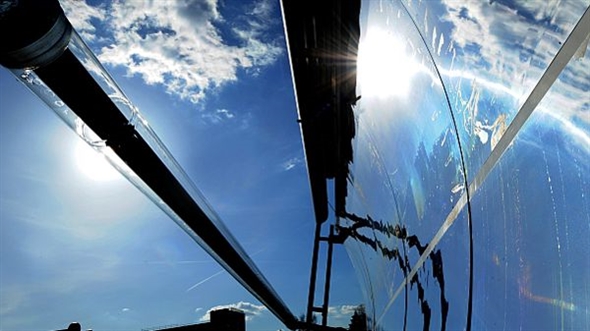
15 Feb Central receiver and linear systems will contribute to achieve lower STE/CSP costs
Brussels,15th February, 2017 – ESTELA, the European Association for Solar Thermal Electricity, welcomes the technical report “Concentrating Solar Power Gen3 Demonstration Roadmap” released in January 2017 by NREL[1] in the context of the SunShot Initiative – a program launched in 2011 in the U.S. aiming at making solar thermal electricity cost-competitive with power from conventional power generation technologies by 2020.
Reportedly, this paper will be used by the U.S. Department of Energy (DOE) to prioritize R&D activities leading to one or more technology pathways to be successfully demonstrated at a scale appropriate for future commercialization of the technology. It states among others that:
- Three potential pathways (molten salts, particle or gaseous) have been defined during a workshop of CSP stakeholders held in August 2016 by DOE; these should be used for the next generation of STE/CSP plants (CSP Gen3) based on the thermal carrier in the receiver.
- A previous analysis of DOE selected the supercritical carbon dioxide (sCO2) Brayton cycle as the best-fit power cycle for increasing the thermos-electric conversion efficiency of future STE/CSP systems, and thus reducing cost of STE/CSP.
- In section 2 of the NREL report (a survey of the most suitable technologies to allow for a future commercial use of sCO2 cycles) central receiver tower technology is presented as sole suitable technology compared to linear systems, namely parabolic troughs, linear Fresnel reflectors, etc.
ESTELA endorses the paper’s conclusion that R&D should focus on confirming the ability of each technology (molten salts, particle, gaseous) to “address the market requirements, such as ramp rates, reliability, availability, and other market-driven criteria” and that “for any of these technologies to successfully compete in the future marketplace, the needs of the evolving market must be understood, and changes must be incorporated into the technology development process”.
However, ESTELA underlines that:
- Based on the currently available research results, only central receivers can indeed achieve temperatures of over 700°C suitable for the implementation of sCO2 systems.
- However, having in mind the overall key objective of cost reduction for the entire STE/CSP sector and the uncertainty regarding any industrial implementation of such sCO2 systems in the short/mid-term, linear systems can also achieve substantially lower costs – provided that the STE/CSP market would scale up to some 20 GW.
- Moreover, the capability for linear systems to achieve at least 550°C is in some cases already proven at small/mid-scale, using only molten salts for tubes and thermal storage, with significant improvement of the overall efficiency.
[1] National Renewable Energy Laboratory (NREL) and Sandia National Laboratories, M. Mehos, C. Ho and A. Kruizenga et al. (2017), “Concentrating solar Power Gen3 Demonstration Roadmap”, retrieved from: http://m.estela.solar/2lJPP67



